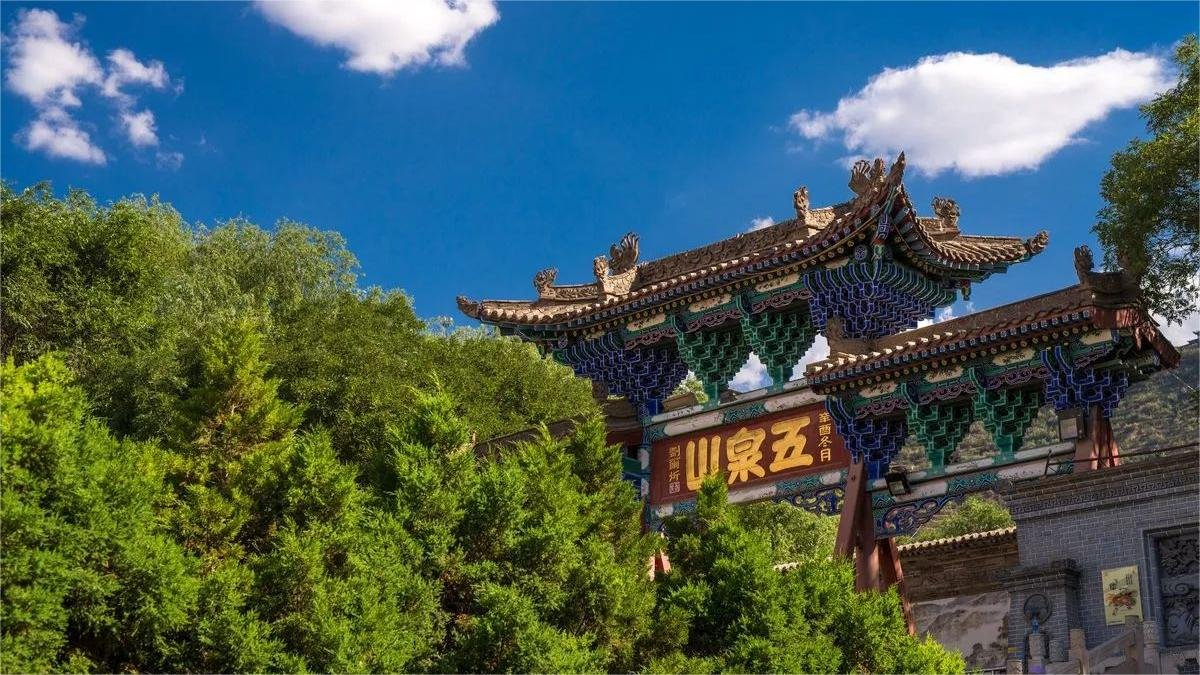Wuquanshan Park (五泉山公园, also known as Five Springs Mountain Park), located in Lanzhou, is renowned as Gansu Province‘s premier park, named after its five famous springs: Hui Spring, Ganlu Spring, Juyue Spring, Mozi Spring, and Meng Spring. The park’s ancient architectural complex dates back to the Yuan Dynasty.
From 1919 to 1924, Liu Erxin, a prominent scholar in modern Lanzhou, refurbished the dilapidated buildings of Wuquanshan Park according to the mountainous terrain and water system. He also expanded and added pavilions and halls, enriched the cultural and educational functions of the ancient architecture, and inscribed numerous couplets, complemented by gardens and ponds.
Wuquanshan Park is celebrated for its natural beauty and historical sites, prominently featuring Buddhist temples and ancient structures. Among them are Chongqing Temple, Qianfo Pavilion, Mani Temple, Dizang Temple, Sanjiao Temple, Half-Moon Pavilion, Jianqiao, and Zhongshan Hall, totaling more than a thousand rooms dating back to the Ming and Qing Dynasties. The earliest existing building in the park dates back to the fifth year of the Hongwu reign (1372), boasting over 600 years of history.
The park is characterized by lush greenery and an elegant, ancient ambiance. Visitors can enjoy hiking for exercise, worship at Buddhist temples for blessings, and ascend to the mountaintop to admire panoramic views of Lanzhou City below. Wuquanshan Park not only preserves historical relics but also offers a serene retreat amidst cultural richness and natural splendor in Lanzhou.
Table of Contents
- Basic Information
- Location and Transportation
- Highlights of Wuquanshan Park
- Other Attractions in Lanzhou Suburbs
Basic Information
| Estimated Length of Tour | 2 hours |
| Ticket Price | Free |
| Opening Hours | 8.00 – 18.00 |
| Telephone Number | 0086-0931-8243247 |
Location and Transportation
Wuquanshan Park is located at 103 Wuquan South Road, Chengguan District, Lanzhou City, Gansu Province, China. To get there, you can take bus 11 or 123 and get off at Wuquanshan Park Stop (五泉山公园站).
Highlights of Wuquanshan Park
Five Spring Gate
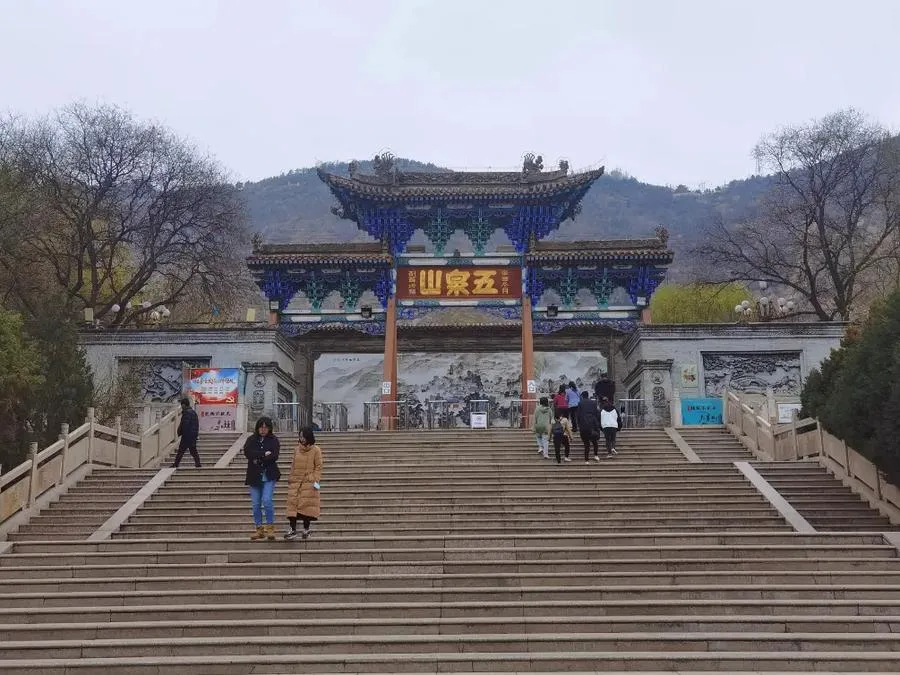
Standing proudly at the foot of the mountain, the Five Spring Gate serves as the entrance to the park, originally marking the entrance to the mountain in ancient times. The name “Wuquanshan” (Five Springs Mountain) was given by Liu Erxin, inspired by the five famous springs within the park:
- Hui Spring: Located at Xilongkou, known for its abundant water flow that benefits nearby residents for drinking and irrigation, symbolizing benevolence (“hui”).
- Ganlu Spring: Found in Qingxufu, renowned for its sweet water quality, symbolizing auspiciousness (“ganlu”).
- Juyue Spring: Situated east of Wenchang Palace, the first moonlight touches this spring, allowing one to “scoop the moon” from its waters (“juyue”).
- Mozi Spring: Located west of Juyue Spring, its name derives from the old saying that touching this water could determine the gender of a child (“mozi”).
- Meng Spring: Found at Donglongkou, its name originates from the “Book of Changes (Yijing),” symbolizing enlightenment and wisdom (“meng”).
Mountain Gate

The Mountain Gate, originally the main entrance to the park, now bears the inscription “乐到名山” (“Enjoying the Beauty of Famous Mountains”), written by the renowned calligrapher Shu Tong. The gate is adorned with couplets composed by Liu Erxin, reflecting on the ever-changing natural beauty and hoping for the emergence of talented individuals who will benefit society.
Flanking the original gate are side doors inscribed with the words “怀珠” and “韫玉,” now displayed inside the courtyard’s east and west wing rooms. These inscriptions were inspired by the ancient poet Lu Ji’s “Wen Fu,” symbolizing the brilliance of pearls in flowing rivers and the radiance of jade hidden within stones. This metaphorical richness signifies the spiritual and cultural treasures embodied by the springs, rocks, and cultural heritage of Wuquanshan.
Butterfly Pavilion

Upon entering through the Mountain Gate, visitors are greeted by a statue of Confucius, erected by contemporary artists. Ascending the steps beyond, one encounters the Butterfly Pavilion, named for its resemblance to a butterfly. During Liu Erxin’s renovation, a stage was set beneath the pavilion, inscribed with the phrase “高山流水,” symbolizing the harmony of opera singing that requires both performers and an appreciative audience. To the east and west of the Butterfly Pavilion, entrances named “上下关” (Up and Down Gate) and “仙凡界” (Boundary between Immortals and Mortals) once stood, adorned with couplets expressing the transition from the bustling opera scene to the tranquil mountain retreat, metaphorically journeying from worldly affairs to the realm of spiritual enlightenment.
Junyuan Temple

Formerly known as Chongqing Temple, Junyuan Temple within Wuquanshan Park boasts a grand entrance with three main gates and additional side doors. The central gate is inscribed with “浚源寺,” while the side gates bear the inscriptions “今日流水” (Flowing Water Today) and “明月前身” (Moonlight before Its Appearance). At the main entrance, a couplet composed by Liu Erxin (currently inscribed by Yin Jianding) eloquently describes the creation of a joyful land amidst the grandeur of mountains and rivers, inviting visitors to immerse themselves in the beauty of nature and the tranquility of Zen practice.
Wanyuange (Hall of Ten Thousand Sources)
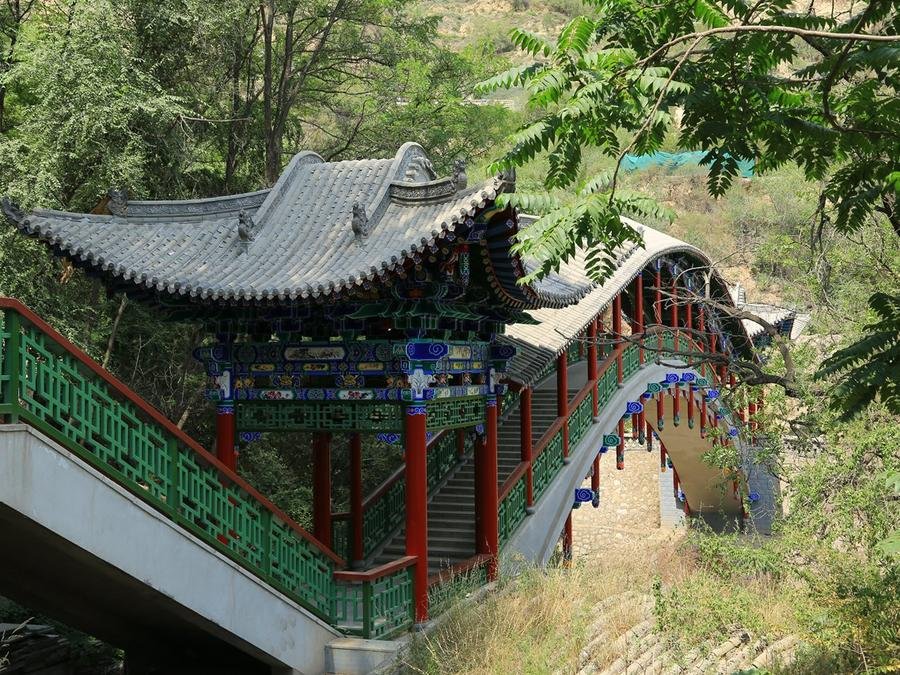
Perched on a high platform behind the Great Hall of the Buddha, Wanyuange was originally the Mingyuan Building of Gansu Provincial Examination Hall. Liu Erxin relocated it here, dedicating it to the Four Sages and Four Virtuous of Chinese culture. It venerates the Confucian values of self-cultivation, family harmony, national governance, and world peace. The hall is structured into three levels:
- The upper level houses the “Hall of Ten Thousand Sources,” honoring Confucian sages Fu Xi, King Wen of Zhou, Duke of Zhou, and Confucius. Inscriptions here reflect the balance of yin and yang, crucial to the stability of the world.
- The middle level features the “Hall of Reflections,” honoring Neo-Confucian scholars Zhou Dunyi, Shao Yong, Cheng Yi, and Zhu Xi. Their teachings emphasize the continuity of learning across generations.
- The lower level is the “Hall of Aspiration,” used for academic discussions and lectures by Liu Erxin, promoting scholarly pursuits and the passing down of cultural heritage.
Taihao Palace
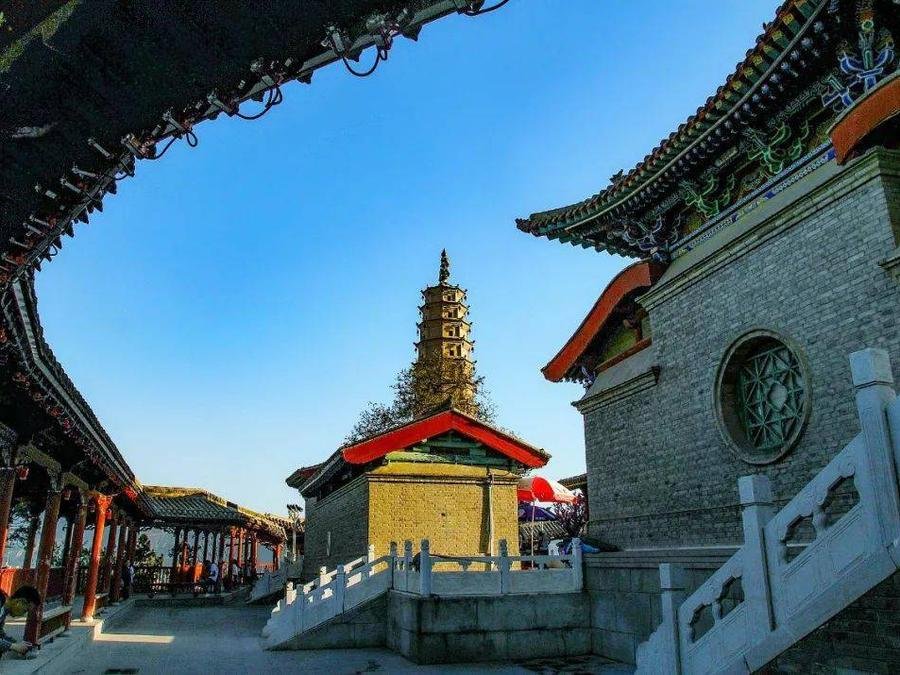
Located west of Wanyuange and southwest of the Great Hall of the Buddha, Taihao Palace stands on the former site of the Lamp-burning Monastery. Liu Erxin constructed it to honor the ancient sages of Longxi and inspire future generations. The palace comprises: The Fourth Terrace, dedicated to Fuxi, accompanied by Nuwa and Huangdi, the Three Sages of ancient Longxi; The Third Terrace, housing shrines to Rangzisun and Shizuozhi, and the Second Terrace dedicated to Qinzi, representing the Confucian scholars of Longxi; The Three Scholars of Longxi, namely Qinzu, Shizuoshu, and Rangzichi, who are among the seventy-two disciples of Confucius.
Qingyun Steps
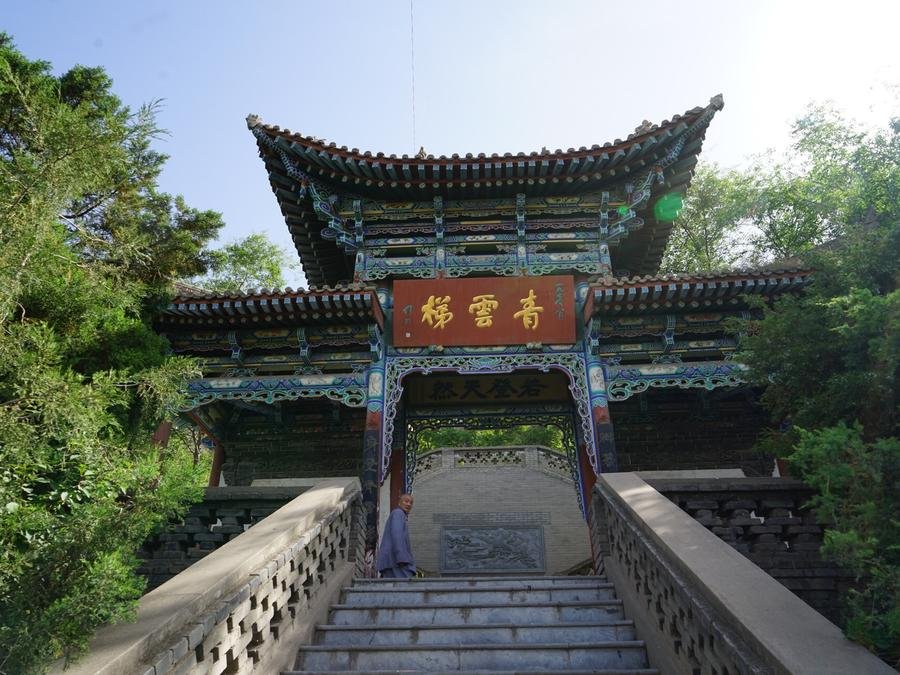
One of the notable features of Wuquanshan Park is the Qingyun Steps, located south of Wanyuange as you ascend along the slope. The name “Qingyun” implies the steep and challenging ascent up the mountain, which symbolizes the pursuit of higher goals and ideals. Renowned calligrapher Shu Tong inscribed the characters “青云梯” (Qingyun Steps). A plaque bearing the inscription “若登天然” by Liu Erxin hangs nearby, suggesting the natural beauty akin to reaching the sky. On the reverse side, another inscription by Liu Erxin reads, “高处何如低处好,下来还比上来难,” conveying that what matters isn’t necessarily the altitude but rather one’s actions and perspectives. Descending gracefully from the heights requires a sense of openness and composure.

